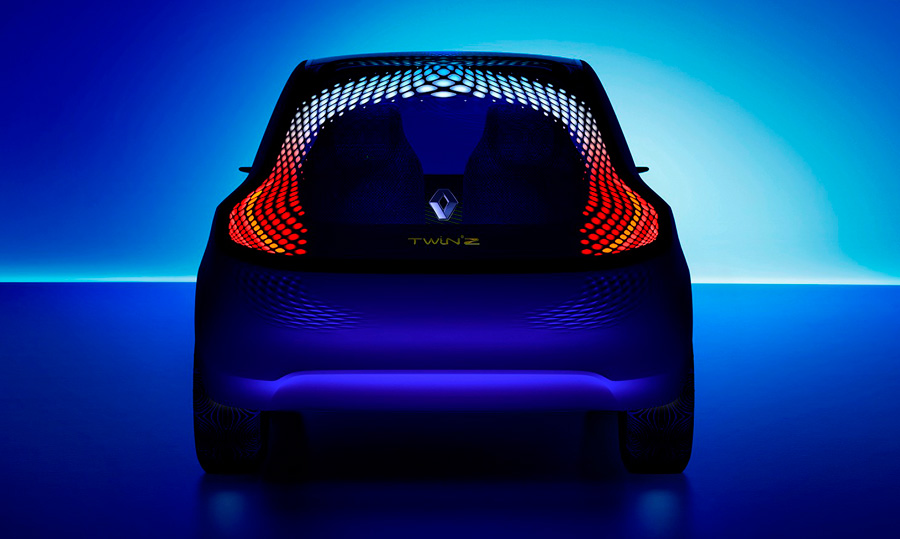
A new concept car developed by Renault in partnership with Lovegrove Studio could help re-energize the brand in the US market.
Working with contemporary industrial British designer, Ross Lovegrove, the Twin’Z was developed to explore a new design language for the automobile and expanding the way technology is integrated into a vehicle.
The latest concept to spring from Renault Design’s life-cycle “flower” design philosophy, the Twin’Z draws its inspiration from the heritage of Renault models such as the Renault 5 and Renault Twingo.
The all-electric rear-wheel drive Twin’Z, being unveiled at the Triennale of Milano, has a range of 160km (almost 100 miles). But it’s really all of the other tech features that make the vehicle most intriguing.
Just about every facet of the car’s design has some kind of technology integrated into it − ranging from the suicide-style doors that open electrically, to the headlights that have been designed to give the vehicle a more alert expression.
The Twin’Z’s glass roof is designed in layers and incorporates an array of LEDs which form animated patterns intended to enhance the overall experience of the driver and passengers.
Inside, the seats have been upholstered in a 3D woven, self-cushioning, lightweight blue textile which is both waterproof and flame resistant.
The conventional dashboard has been replaced by a single tablet with a touch-screen display that controls everything from the vehicle’s heater systems to the roof. A smartphone display’s the vehicle’s speed, range-related information and the principal warning lights.
The vehicle’s conventional door mirrors have been replaced by an integrated video camera that has been aerodynamically “liquefied” within the body. The Twin’Z’s crystal rear spoiler has been designed to not only generate extra downforce but also to give the car a more dynamic visual sense.
Even some of the cool technology features like regenerative braking that helps to power the typical EV have been enhanced from an aesthetic and functionality standpoint on the Twin’Z. For example, when the driver presses on the brake pedal, the burst of the brake lights climbs gradually towards the roof, for enhanced visibility and safety.
Renault’s official press release about the Twin’Z doesn’t mention any production plans for the vehicle, but there has been speculation that the concept could hint at a future model for the US.









